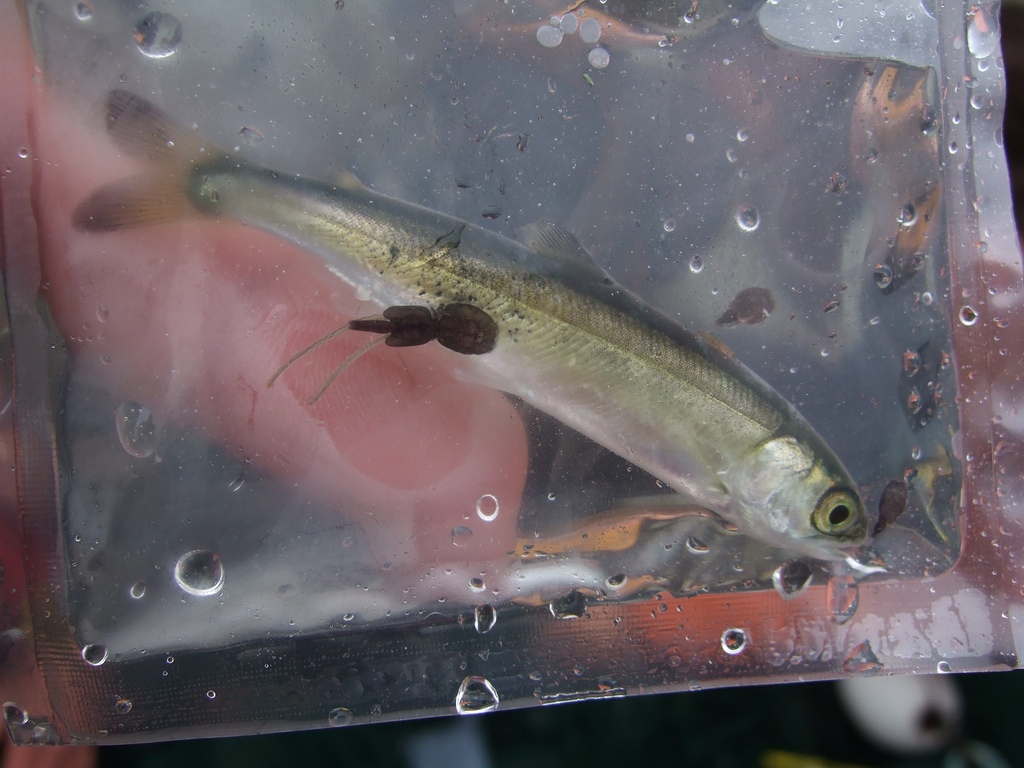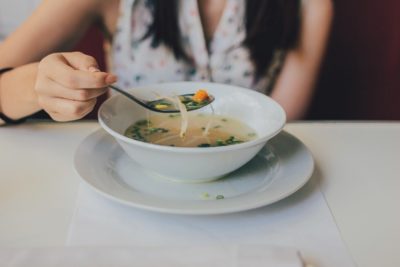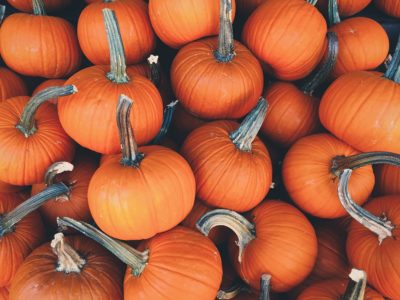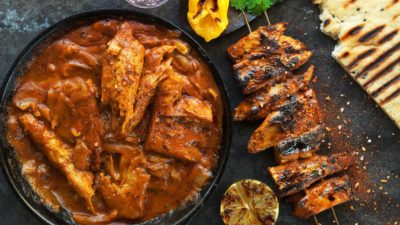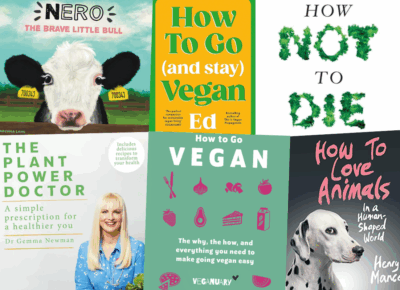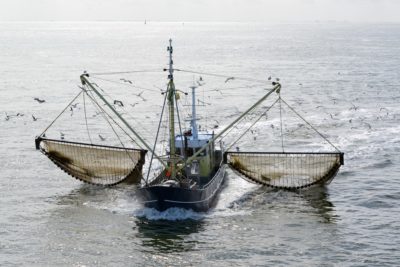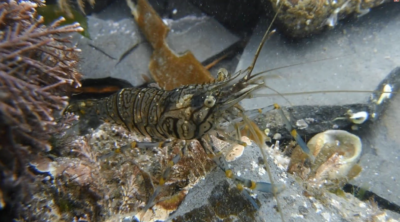Fish are inextricably tied to the water and literally suffocate in the air. Here’s why eating fish instead of meat isn’t the kinder option.

Harmful perceptions about fish such as “Is fish farming cruel?” and “Do fish even feel pain?” persist despite plenty of evidence proving their intelligence and capacity to suffer.
‘We wouldn’t accept killing chickens by throwing them into a tank of water and waiting for them to drown, so why don’t we object to fish suffocating on trawler decks?’ says Victoria Braithwaite, Professor of Fisheries and Biology at Penn State University and author of Do Fish Feel Pain.
How does fish farming work?
In fish farms, fish are packed into unnatural small, filthy enclosures. The overcrowded conditions cause a third of them to die, and an array of chemicals are used to try to prevent even more from dying. In this stressful environment, many fish will bite off the fins, tails, and eyes of others, a distressing behavior seen in other factory-farmed animals.
Philip Lymbery, Chief Executive of Compassion in World Farming, explains that salmon as big as three-quarters of a meter long can each be allocated the equivalent of a bathtub of water: “Packed tightly, these ocean wanderers swim as a group, or shoal, in incessant circles around the cage, like the pacing up and down of caged zoo animals.”1
Often the cruelty is deliberately inflicted. Shrimps and prawns, for example, are blinded because most of those reared in captivity aren’t able to reproduce, and having their eyestalks cut off triggers the maturing of their ovaries.
‘Eyestalk ablation’ has been labeled ‘cruel’ and ‘traumatic’ by numerous scientists but it won’t stop – it is an intrinsic part of shrimp farming and more than half of all shrimps consumed globally are farmed.
Farming fish also contributes to the environmental destruction of sea fishing. For one thing, farmed species such as salmon and trout are carnivores so they are fed fish taken from the oceans, thereby exacerbating the destruction. Fish farming also directly impacts the health of wild fish because they escape and spread diseases and sea lice among their wild counterparts.
Sea lice cause inflammations and hemorrhages and attack the fish’s organs, eventually eating them alive. The lice from farmed salmon are now spreading to wild populations of fish in parts of the world, while pesticides used to control sea lice in fish factory farms are proving harmful to wild fish populations.2,3
Transport and slaughter
Transporting fish is a stressful and painful experience for them. They may be injured when caught by the vacuum pumps and nets, and suffer as they undergo changes in water pressure and temperature.
It is common practice to starve fish for 48 hours before transporting them to slow down their metabolisms and reduce the contamination of the transport water from their feces. Some fish may even be kept out of the water during the transport period.
The only legal stipulation for slaughtering the tens of millions of farmed fish who are killed each year is that they be ‘spared any avoidable pain, distress or suffering’.4 Fish on farms may be killed by asphyxiation or they may have their gill arches torn, an inhumane procedure that causes the animals to struggle violently for the four minutes it takes for the fish to die.5
Some fish are stunned before slaughter by a blow to the head, electrical stunning, the use of carbon dioxide, or immersion in ice-cold water. None of these methods are fully effective and fish often suffocate or bleed to death without being stunned at all.
How many fish are killed for food?
Surprisingly, this is tricky to answer. Fish are farmed in greater numbers than any other animal, yet are often the forgotten victims of factory farming. Captured fish are still measured in kilograms, instead of being counted as individuals.
An estimated 92.1 million metric tonnes of fish were caught in 2022.6 A 2024 study published by Cambridge University Press estimated the global number of fish caught from the wild annually from 2000-2019. The researchers calculated that between 1.1 and 2.2 trillion fish were caught each year. And these figures don’t include illegal fishing, fish caught in discarded gear, and farmed fish – each a huge topic in their own right.7

How are fish caught in the wild?
Netting can capture tens of thousands of fish at one time, with animals becoming exhausted as they desperately try to outswim the net. When the nets are pulled to the surface, those at the bottom are crushed by the weight of fish above them.
The rapid change in pressure causes their swim bladders to overinflate, and their stomachs and intestines to be pushed out through their mouths and anuses. Their eyes distort, bulge, and can also be pushed out of their sockets.
The animals are then dropped onto the ship’s deck where those who are still alive will suffocate – a process that can take several minutes. Others, like tuna, are hoisted from the water with a hook, and killed by forcing a spike through their brains. Despite an ever-increasing number of studies that show aquatic species can feel pain, there are no still welfare laws governing the slaughter of fish at sea.8
Overfishing causes habitat destruction
Industrial fishing is destructive to our environment. According to a recent report, one-third of assessed UK fish stocks are overfished and a quarter were found to be depleted to critically low population sizes.9 Globally, over one-third of fisheries are overfished.10
The number of cod, plaice, and sole has declined in EU fisheries since 1993. Around 63 percent of the assessed stocks in the Atlantic, 82 percent in the Mediterranean, and 66 percent in the Baltic are overfished.11
Tuna, cod, swordfish, and marlin populations have declined by 90 percent during the last century, while the North Sea mackerel population, which collapsed in the 1970s, has never recovered.12 This is just the tip of a devastating iceberg.
Habitats are decimated by the industrial fleet of fishing ships. Bottom trawling gouges scars in the ocean floor, destroying deep-sea coral forests and other delicate ecosystems. A 2024 study estimated that 8.5 to 9.2 billion tonnes of CO2 have been released from trawling into the atmosphere between 1996-2020. The same study also found that around half of all fish caught are used for fishmeal and oil, most of which is fed to farmed animals.13 This means eating meat also contributes to the damage done to the oceans.
Watch this powerful video about the effects of overfishing on our oceans and marine life:
Bycatch
Nets do not discriminate. They will drag any species out of the water, whether they are commercially valuable or not. There are no numbers recorded of either fish or ‘bycatch’ caught. Instead, the industry records weight. The weight of fish and other species caught as bycatch each year is estimated to be more than 20 million tonnes, almost a quarter of all marine species landed.14
An estimated 300,000 whales, dolphins, and porpoises die in fishing nets every year.15 Other bycatch species include sharks, turtles, starfish, sponges, and hundreds of thousands of diving seabirds, among them albatrosses.16
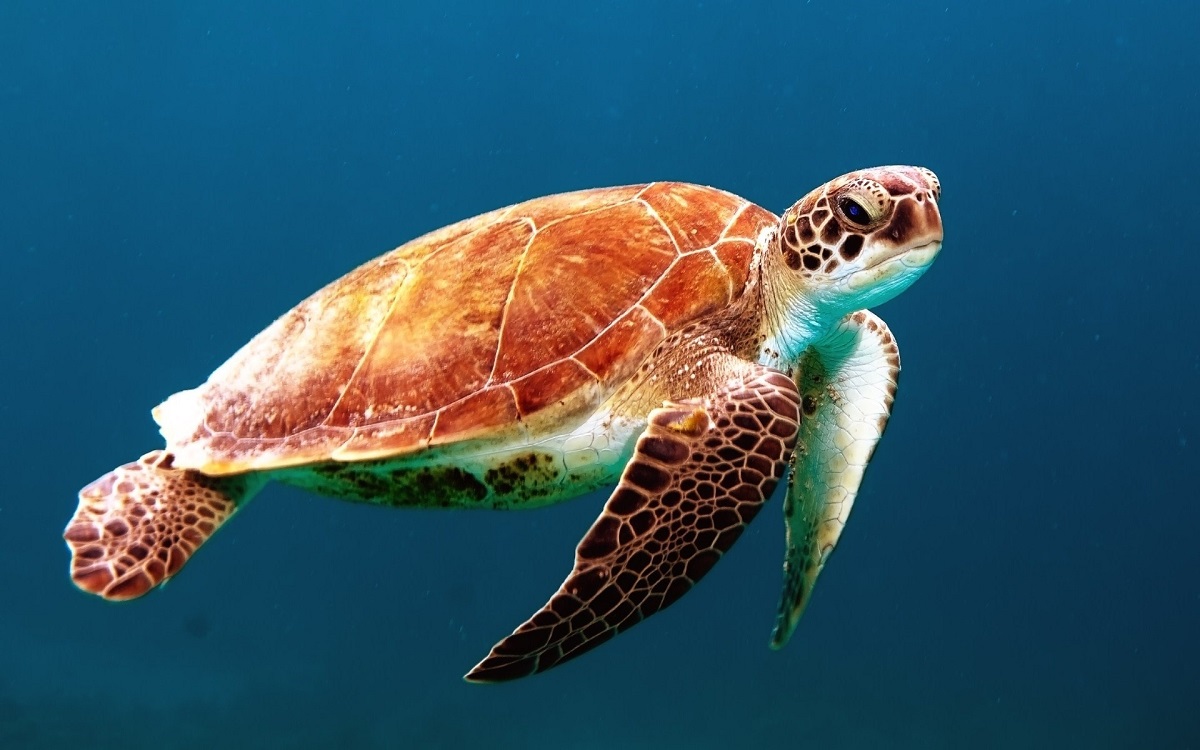
Are fish smart?
Fish can use tools, communicate, and can learn quickly.17 Far from having poor memories, research has shown that several fish species have accurate memories that can last long-term, even years in the case of migrating salmon.18
Fish researcher Culum Brown reviewed nearly 200 papers on fish sensory perception, natural cognitive abilities (including their ability to assess quantity), and their abilities to perceive and experience pain. He found ample evidence that fish are intelligent on all counts.
He concluded: “People need to have a greater appreciation of how smart fish are. Just because we’re ignorant is no excuse to treat another animal poorly.”19
Research is also starting to discover that fish have distinct personalities. It should come as no surprise that all animals, including the dogs and cats we share our homes with, the ducks we feed in the park, and crustaceans like prawns and lobsters in the oceans, are all distinct beings. And their lives are as important to them as ours are to us.
Pigs, cows, and chickens are the ocean’s top predators
Millions of tonnes of fish are harvested to feed farmed animals – including farmed fish. Peruvian anchovies, for example, are fished in their billions, but only two percent are eaten by people, even though as many as 11.5 percent of Peruvian children have chronic malnutrition. The remaining 98 percent are reduced to fishmeal or fish oil which is then added to the feed of farmed animals across the world, including chickens – and farmed fish. 20,21
It is possible to change the way we eat and prevent animal suffering and environmental destruction. There are plenty of vegan seafood alternatives available and we can obtain omega 3 and 6 from plant-based sources.
Why not help put a stop to this cruelty and ditch seafood from your diet? Check out our Choose Fish-Free campaign to find out how.
References
1. McPherson, Colin. “In Too Deep – Why Fish Farming Needs Urgent Welfare Reform.” CIWF, 2005, ciwf.org. Accessed 24 May 2024.
2. Wild Fish. “Report Finds Scottish Salmon Farms Systematically Failing to Meet Own Guidelines, with up to Two Billion Sea Lice Emanating from a Single Farm in a Single Week.” Wild Fish, 28 Mar. 2023, wildfish.org. Accessed 29 May 2024.
3. Wild Fish. “Responsibly Farmed? Investigating the Certification of Scottish Farmed Salmon.” Wild Fish, Sept. 2023, wildfish.org. Accessed 28 May 2024.
4. GOV UK. “Council Regulation (EC) No 1099/2009 of 24 September 2009 on the Protection of Animals at the Time of Killing (Text with EEA Relevance).” Legislation GOV UK, 2020, legislation.gov.uk. Accessed 29 May 2024.
5. Fish Count. “Slaughter of Farmed Fish.” Fish Count, fishcount.org.uk. Accessed 29 May 2024.
6. Statista. “Fisheries & Aquaculture.” Statista, statista.com. Accessed 24 May 2024.
7. Mood, Alison, and Phil Brooke. “Estimating Global Numbers of Fishes Caught from the Wild Annually from 2000 to 2019.” Animal Welfare, vol. 8, no. 33, 1 Jan. 2024, p. e6, cambridge.org. Accessed 24 May 2024.
8. Compassion in World Farming. “Why Fish Welfare Matters: The Evidence for Fish Sentience.” CIWF, 2019, ciwf.org.uk. Accessed 24 May 2024.
9. Oceana. “Taking Stock: The State of UK Fish Populations 2023.” Oceana.org, 2023, oceana.org. Accessed 24 May 2024.
10. FAO. The State of World Fisheries and Aquaculture 2020. FAO, 2020, fao.org. Accessed 29 May 2024.
11. Greenpeace. “Rescuing the North and Baltic Seas: Marine Reserves – a Key Tool.” Greenpeace, July 2004, greenpeace.org. Accessed 29 May 2024.
12. Marsh, Sarah. “Eating Mackerel No Longer Sustainable, Good Fish Guide Advises.” The Guardian, 5 Apr. 2023, theguardian.com. Accessed 29 May 2024.
13. Atwood, Trisha B, et al. “Atmospheric CO2 Emissions and Ocean Acidification from Bottom-Trawling.” Frontiers in Marine Science, vol. 10, 18 Jan. 2024, frontiersin.org. Accessed 28 May 2024.
14,15,16: WWF. “Bycatch – A Sad Topic.” Fish Forward (WWF), 2015, fishforward.eu. Accessed 29 May 2024.
17. Gertz, Emily. “Are Fish as Intelligent as Crows, Chimps… Or People?” Popular Science, 20 June 2014, popsci.com. Accessed 29 May 2024.
18. Braithwaite, Victoria. Do Fish Feel Pain? Oxford ; New York, Oxford University Press, 2010.
19. Brown, Culum. “Fish Intelligence, Sentience and Ethics.” Sentience Collection, vol. 1, no. 18, 1 Jan. 2015, pp. 1–17, wellbeingintlstudiesrepository.org. Accessed 29 May 2024.
20. Fréon, Pierre, et al. “Impacts of the Peruvian anchoveta supply chains: from wild fish in the water to protein on the plate”. GLOBEC International Newsletter, 2010, researchgate.net. Accessed 24 May 2024.
21. Statista. “Chronic Malnutrition: Prevalence among Children under Five Years Old Peru 2009-2021.” Statista, statista.com. Accessed 29 May 2024.

